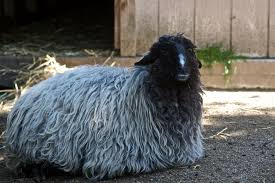Type the name of the breed you're looking for below
[wpdreams_ajaxsearchlite] Don't see the breed your're looking for? Click here and let us know!
Karakul sheep
| Place of Origin | Uzbekistan |
| Origin | Karakul or Qaraqul (named after Qorako‘l, a city in Bukhara Province in Uzbekistan) is a breed of domestic sheep which originated in Central Asia. Some archaeological evidence points to Karakul sheep being raised there continuously since 1400 BC. Hailing from the desert regions of Central Asia, Karakul sheep are renowned for their ability to forage and thrive under extremely harsh living conditions. They can survive severe drought conditions because of a special quality they have, storing fat in their tails. Karakul are also raised in large numbers in Namibia, having first been brought there by German colonists in the early 20th century. |
| Purpose | Meat, Pelt, Fiber, Milk |
| Characteristics | Karakul sheep are a multi-purpose breed, kept for milking, meat, pelts, and wool. As a fat-tailed breed, they have a distinctive meat. Many adult Karakul are double-coated; in this case, people separate the coarse guard hair from the undercoat. Karakul is relatively coarse fiber used for outer garment, carpets and for felting. Karakul pelts Very young or even fetal Karakul lambs are prized for pelts. Newborn karakul sheep pelts are called karakul (also spelled caracul), swakara (coined from South West Africa Karakul), astrakhan (Russian), Persian lamb, agnello di Persia, (Italian), krimmer (Russian) and garaköli bagana (Turkmen). Sometimes the terms for newborn lambs' and fetal lambs' pelts are used interchangeably. The newborn lambs have a tight, curly pattern of hair. The lambs must be under three days old when they are killed, or they will lose their black colour and soft, tightly wound coils of fur. Dark colours are dominant and lambs often darken in colour as they age. Fetal karakul lamb pelts are called broadtail, Breitschwanz (German), and karakulcha. People use the lamb pelts to create various clothing items, such as the Astrakhan (hat) or karakul hat. The pelts have been used in haute couture |



